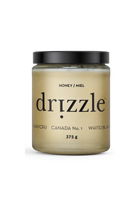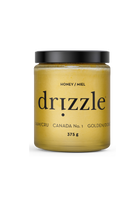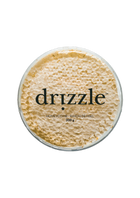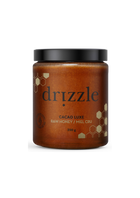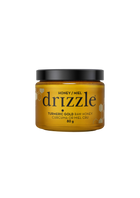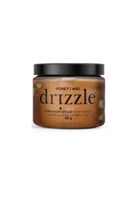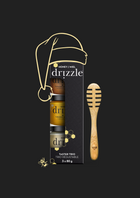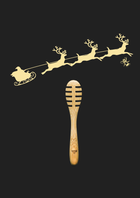Without bees, our world would be a much less beautiful place.
Not only do honey bees produce the nutritionally dense, intensely flavourful liquid gold that we know as honey, but they’re essential to the health of the planet as well. For almost 34 million years, bees have been directly responsible for a significant portion of the earth’s abundance, their activity allowing for the growth of fruits, nuts, seeds, and other fauna. Their role in pollination has ensured that a myriad of ecosystems around the world have thrived and remained able to support a diversity of plant and animal life.
Of the roughly 20,000 known species of bees, only a small fraction actually produce honey, and each honey bee will create only a twelfth of a teaspoon of honey in her lifetime. As early as 9,000 years ago, humans began to work with and learn from the honey bee. And while there are still some mysteries that honey bees have managed to keep under wraps, science has managed to learn enough about them to make it possible for beekeepers to create sustainable, mutually beneficial relationships with their hives and provide environmentally-friendly stewardship. We’re proud to support beekeepers who love both their bees and the environment.
So what goes on inside the hive, anyway? Each colony is a bustling metropolis that houses three different kinds of bees, and these miniature cities are run almost completely on girl power.
The Queen Bee
The queen bee is the only fertile female in the entire colony. When she’s young, a queen will spend a few days flying around to other colonies and mating with up to 15 male drone bees before returning to the hive on a permanent basis. She’s capable of laying around 1,500 eggs a day, and almost every single bee in the colony is one of her children. The queen also produces pheromones that regulate the behaviour of her worker bees, and if she is relocated, they’ll follow her without question.
Worker Bees
Of the 60,000 bees that make up a colony, almost 99% are sterile female worker bees. The hive is managed and maintained by these busy gals, who have different jobs depending on their age. When worker bees are young, their primary job is to feed baby bees in the brood with nectar foraged by their older sisters. As they grow, they’ll spend their time keeping the hive clean and then graduate to guard duty. Finally, they’ll begin foraging for pollen and nectar.
When honey bees find a good spot to forage, they’ll return to the hive and perform a ‘waggle dance’, where they’ll fly in a sort of figure eight -- this is a unique behaviour that communicates the direction, distance, and type of resource that she’s found.
Honey bees do sting, but they’ll only do it for one good reason: to protect their hive. Their stingers are barbed and connected to their bodies, so when a bee stings you and flies away, her stinger is ripped out, and she will, inevitably, die. But honey bees, unlike their reputation, are very gentle creatures. They’re wonderful at reading your emotional state, just like any other animal. If you keep yourself calm and move slowly, they’re less likely to see you as a threat.
Drone Bees
Drone bees are fertile males and exist pretty much for the sole purpose of fertilizing queens from other colonies. They die in the act of mating, don’t have stingers, and any drones that have survived until the winter are banned from the hive to save resources for female bees.
Hive Behaviour
When the temperature drops below 10 degrees Celsius, honey bees will retreat into their hives and form what’s known as a winter cluster. During the cold months, they vibrate in order to keep the temperature in the hive at a comfortable level, which is actually quite warm - anywhere from 27 to 34 degrees Celsius. They do eat their honey to survive, but strangely enough, they consistently produce far more honey than they could possibly eat their way through. While scientists are still studying why they do this, some have speculated that this is an evolutionary response to the fact that everyone from bears to humans have been foraging honey for thousands upon thousands of years.
Honey bees are incredibly important to agriculture, wild habitats, and the health of the earth, and it’s our responsibility to provide ethical, sustainable stewardship in a time when wild populations are threatened. The sweetest and easiest way to support honey bees is to always choose raw, sustainably produced, 100% Canadian honey.
By bringing Drizzle honey home, you’re not only elevating your kitchen with raw Canadian honey in its purest form, but you’re helping honey bees thrive, too!






